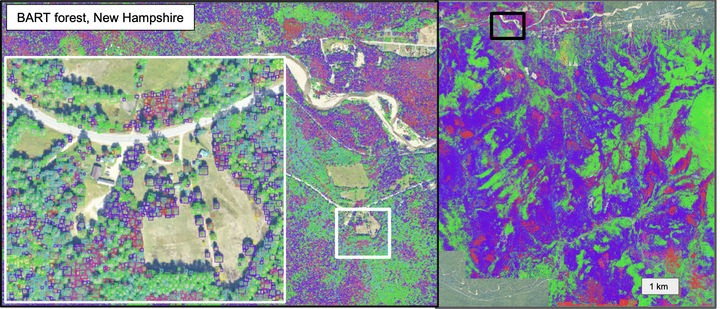Continental-scale Hyperspectral tree species classification in the National Ecological Observatory Network

Abstract
Advances in remote sensing imagery and computer vision applications unlock the potential for developing algorithms to classify individual trees from remote sensing at unprecedented scales. However, most approaches to date focus on site-specific applications and a small number of taxonomic groups. This limitation makes it hard to evaluate whether these approaches generalize well across broader geographic areas and ecosystems. Leveraging field surveys and hyperspectral remote sensing data from the National Ecological Observatory Network (NEON), we developed a continental extent model for tree species classification that can be applied to the entire network including a wide range of US terrestrial ecosystems. We compared the performance of the generalized approach to models trained at each individual site, evaluating advantages and challenges posed by training species classifiers at the US scale. We evaluated the effect of geography, environmental, and ecological conditions on the accuracy and precision of species predictions. On average, the general model resulted in good overall classification accuracy (micro-F1 score), with better accuracy than site-specific classifiers (average individual tree level accuracy of 0.77 for the general model and 0.72 for site-specific models). Aggregating species to the genus-level increased accuracy to 0.83. Regions with more species exhibited lower classification accuracy. Trees were more likely to be confused with congeneric and co-occurring species and confusion was highest for trees with structural damage and in complex closed-canopy forests.
#Supplementary notes can be added here, including code and math.